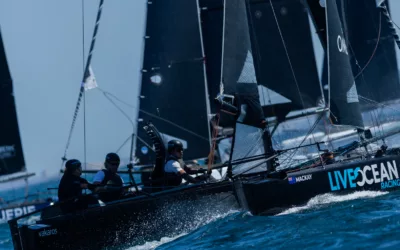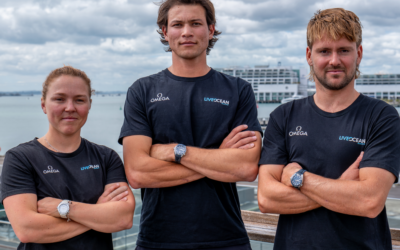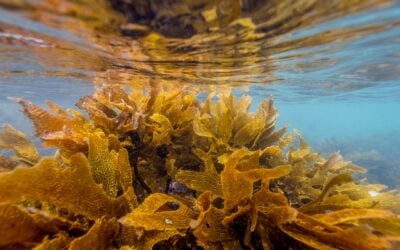Photo Credit – Sarah Novak.
“Ocean blindness” doesn’t mean that conservation should end at the water’s edge. This summer I was lucky enough to visit two predator-free conservation islands in the Hauraki Gulf/Tīkapa Moana: Tiritiri Matangi and Rotoroa. A world away from the city, these sanctuaries hum with the birdsong of saddlebacks and bellbirds and are covered in lush, regenerating indigenous bush. These islands – part of a collective, Gulf-wide effort to look after our natural taonga – are impressive in what they have achieved for New Zealand’s most vulnerable land-dwelling species of both plants and animals. But they alone cannot tell the full story of the health of the Gulf, a large part of which lies beneath the waves and which is much less frequently thought of.
The rest of the Gulf – the watery part contained within the stocky arm of the Coromandel and sheltered by the protective screens of the barrier islands – is in trouble [1], though many people may not be aware of it. The blue and sparkling water, rippling kelp, and vibrant pods of dolphins you might see on a typical weekend day out on the Gulf may not shout “unhealthy!”, let alone make you worry that they or other ecological systems might be at risk of collapse. Yet there is good evidence – both scientific and from many communities’ direct experiences over decades – that depletion of life and degradation of environmental quality are the new normal in the Hauraki Gulf [2][3]. The fact that this can sometimes be harder to see only makes the problem all the more urgent. How can we see more clearly beneath the waves?
I got to experience this type of “ocean blindness” for myself recently. At the end of 2019 I spent a few days on Rotoroa island, one of the lesser-known sanctuary islands to the east of Waiheke. While there, I went for a snorkel with Experiencing Marine Reserves (EMR), a New Zealand-wide organisation focused on helping Kiwis access and understand our marine environments. During our snorkel we were asked to mentally note down what we thought of the health and mauri of the underwater environment. Was there a diversity of fish and seaweed species? Was the water clear or murky? Did the sea floor look barren or abundant with life? Most people intuitively concluded that the situation was not good, but in general tended to underestimate just how bad things were. For example, what we saw as slightly cloudy water was, in fact, a severe sedimentation problem caused by runoff in the Firth of Thames. [4]
It can be hard for many of us to understand what kind of state the ocean is in – even through a snorkel mask only centimetres away from a marine ecosystem. Even for those who have spent their entire lives immersed in the Gulf, understanding what “healthy” looks like can be very difficult. The slow and diffuse progression of unpredictable factors like climate change and invasive species can be hard to detect. What baseline or yardstick can we use to make a call about ocean health?
“Shifting baseline syndrome” means that many people’s “ideal environment” was what they experienced as a child or young person, and that “health” or “sustainability” is often measured against that. [5] Does an ocean floor covered in seaweed mean a healthy ocean floor? What if those are invasive sea weed species, such as the “gorse of the sea” Undaria that is now widespread around the country? [6] Ocean blindness comes in many forms, and the first step towards truly seeing clearly what’s below the surface comes from being aware of our predispositions and biases – especially our tendency to often think things are better underwater than they actually are, or focusing all of our energies on land-based conservation.
It can be hard to see what’s beneath the waves. Yet this means that we should only be more ambitious and bold in what we do for ocean conservation, something that is central to Live Ocean’s mission. The problems that we do see in the Gulf and elsewhere are likely to be only a small part of the picture, so let’s strive to do more than we think is needed for our oceans. Perhaps we in New Zealand can be leaders in shifting the baseline, but this time in a positive direction.
[1]https://www.seachange.org.nz/assets/Sea-Change/5086-SCTTTP-Marine-Spatial-Plan-WR.pdf
[2]https://www.seachange.org.nz/assets/Sea-Change/5086-SCTTTP-Marine-Spatial-Plan-WR.pdf
[3]https://www.beehive.govt.nz/release/government-helps-fund-efforts-restore-shellfish-beds-hauraki-gulf
[4]https://www.waikatoregion.govt.nz/services/publications/tr201632/
[5]https://esajournals.onlinelibrary.wiley.com/doi/abs/10.1002/fee.1794
[6]https://researchspace.auckland.ac.nz/handle/2292/27008



